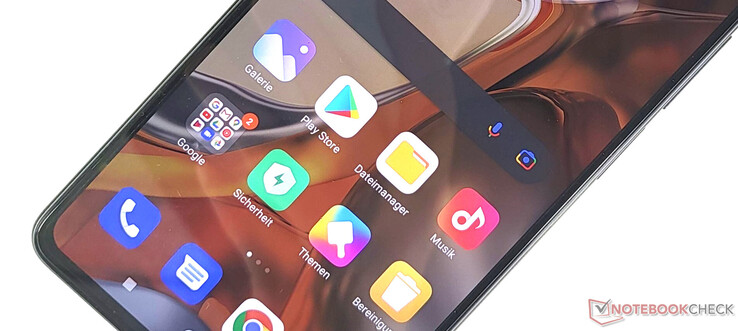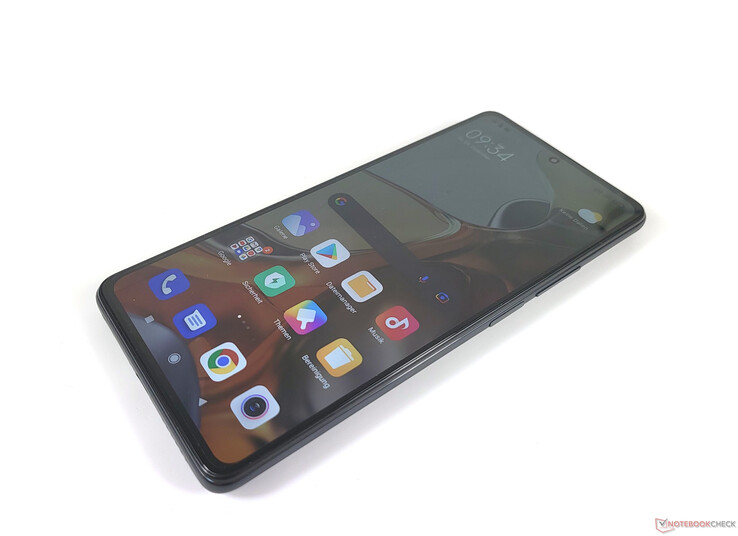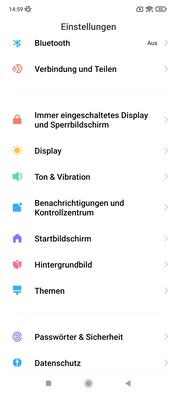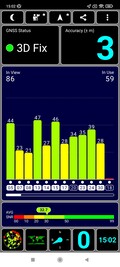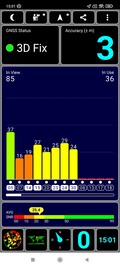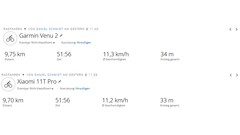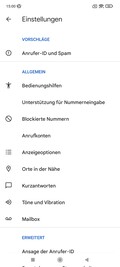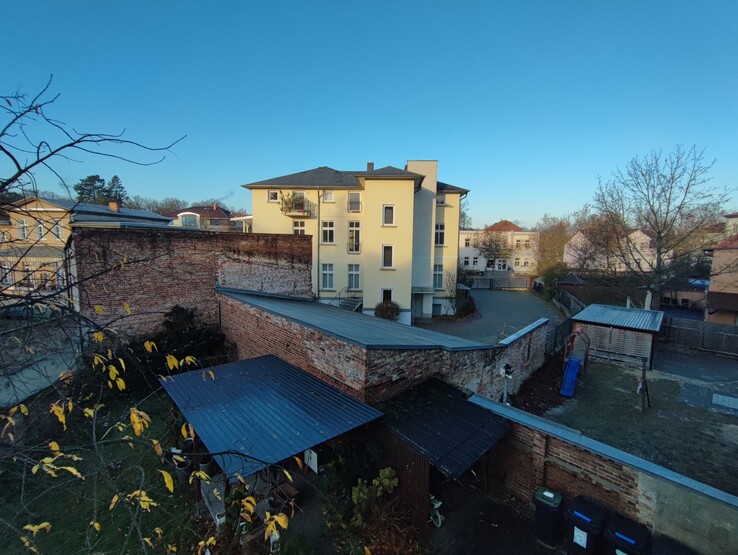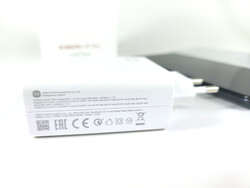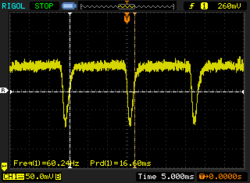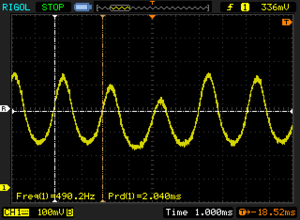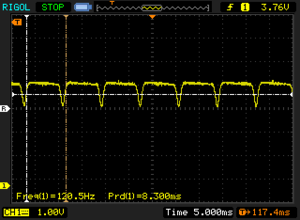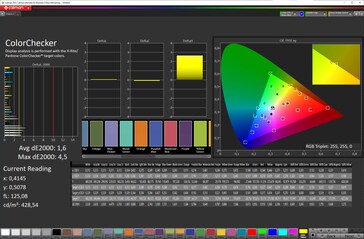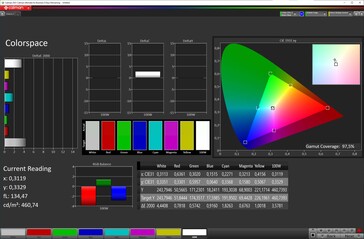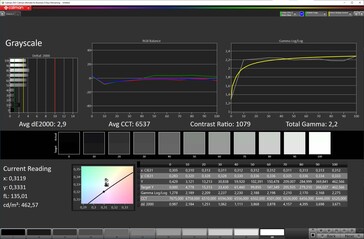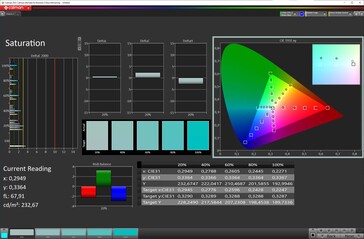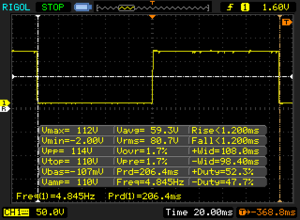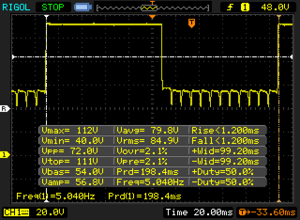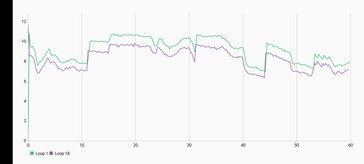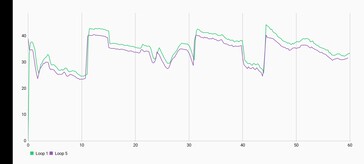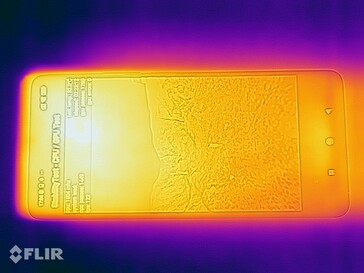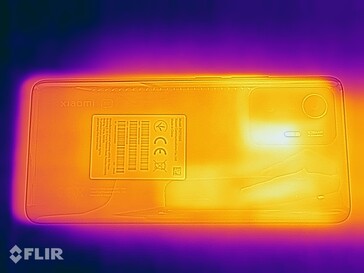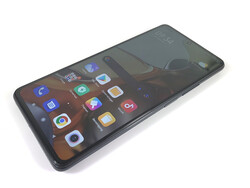Xiaomi 11T Pro review: High-end smartphone with blazing fast charging times and long-term updates
After having already reviewed the Xiaomi 11T, we are now also testing the Pro version of the 11T series. The 11T Pro is very similar to its sibling, but the premium phone from Xiaomi offers two noteworthy advantages over the "standard" version. First, the 11T Pro features a 2021 flagship SoC, the Snapdragon 888, and second, the 5,000 mAh battery can be charged very quickly at up to 120 watts. Furthermore, the Qualcomm chipset allows video recording at 8K resolution.
As for the rest of the components, the two 11T models are hardly any different, at least on paper. The Pro variant also sports a 6.67-inch 1080p+ AMOLED display with a refresh rate of 120 Hz, UFS 3.1 storage including 8 GB of RAM, and a triple-camera setup on the back.
Users who want to take advantage of the Qualcomm SoC and the company's HyperCharge technology will have to pay a price premium of 100 Euros (~$113) compared to the 11T - the 128 GB version of the Xiaomi 11T Pro starts at an MSRP of 649.90 Euros (~$734) in Germany.
Possible contenders in comparison
Rating | Date | Model | Weight | Drive | Size | Resolution | Price |
|---|---|---|---|---|---|---|---|
| 87.6 % v7 (old) | 12 / 2021 | Xiaomi 11T Pro SD 888 5G, Adreno 660 | 204 g | 256 GB UFS 3.1 Flash | 6.67" | 2400x1080 | |
| 86.6 % v7 (old) | 10 / 2021 | Xiaomi 11T Dimensity 1200, Mali-G77 MP9 | 203 g | 128 GB UFS 3.1 Flash | 6.67" | 2400x1080 | |
| 87.2 % v7 (old) | 04 / 2021 | OnePlus 9 SD 888 5G, Adreno 660 | 192 g | 256 GB UFS 3.1 Flash | 6.55" | 2400x1080 | |
| 86.9 % v7 (old) | 10 / 2021 | Motorola Edge 20 Pro SD 870, Adreno 650 | 185 g | 256 GB UFS 3.1 Flash | 6.70" | 2400x1080 | |
| 89.5 % v7 (old) | 02 / 2021 | Samsung Galaxy S21 Exynos 2100 5G, Mali-G78 MP14 | 169 g | 128 GB UFS 3.1 Flash | 6.20" | 2400x1080 | |
| 87.3 % v7 (old) | 02 / 2021 | Xiaomi Mi 11 SD 888 5G, Adreno 660 | 196 g | 128 GB UFS 3.1 Flash | 6.81" | 3200x1440 |
Case - Xiaomi smartphone with punch hole
The 11T Pro's case doesn't differ from that of the Xiaomi 11T, at least not on the outside. Even the color variants are identical with "Meteorite Gray", "Moonlight White", and "Celestial Blue", which isn't a big deal because we really like how the Xiaomi phone looks. While the white and blue color options are matte, the gray back of our review sample acts more like a kind of mirror. The matte finish naturally makes fingerprints much less prominent compared to the high-gloss look of the Meteorite Gray variant.
The slightly curved glass panel on the back feels comfortable in the hands. Overall, the build quality and feel are at a very high level. The built-in buttons also sit firmly in the frame, and the pressure points are pleasantly firm. The 11T Pro is not waterproof, but it does have an IP certification according to IP53. This means that the case is at least protected from rain or splashing water.
The Gorilla Glass Victus on the front is flatly integrated with the frame. Whether you like that or not is a matter of taste. One negative aspect of this flat design are the somewhat wide bezels at the top and bottom of the 6.67-inch display. These are much thinner in the Xiaomi Mi 11. This only results in a solid screen-to-body ratio of 85.2%.
Connectivity - 11T Pro with UFS storage
The Chinese manufacturer offers either 128 GB or 256 GB of UFS 3.1 flash memory. In contrast to the 11T, Xiaomi equips the Pro model with LPDDR5 instead of LPDDR4x RAM. However, the 11T Pro doesn't offer a version with over 8 GB of RAM, either. The internal UFS storage in our review sample has a capacity of 256 GB, but only 224 GB is available to the user out of the box. It's not possible to expand the storage.
A dual-SIM function as well as USB OTG for the quick connection of external accessories are included in the high-end phone's connectivity features. The wireless image transmission of screen content (Miracast) also works without issues in the test. A USB Type-C port using the USB 2.0 standard is available for wired data transfer.
The Xiaomi 11T Pro's Camera2 API supports Level 3, and thanks to DRM Widevine L1, it's possible to watch streaming content in HD quality.
Software - Xiaomi smartphone with long-term updates
The Chinese manufacturer can now score some plus points when it comes to its update policy. After Samsung took the first step, Xiaomi has now also finally committed to providing long-term software support for its premium smartphones. For the Xiaomi 11T Pro, this specifically means three major Android upgrades and four years of security updates. However, with security patches at the level of August, the Chinese high-end phone is a bit outdated at the time of testing, which is why we don't expect it to be getting monthly updates in the future. There's no information as to how often the software will be updated.
Google's Android version 11 is used as the operating system. The manufacturer adds its own user interface, MIUI version 12.5.7, on top of the stock Android interface. With its separate notification center, app switcher, and control center, the user interface of MIUI 12 is more oriented towards Apple's iOS than the underlying Android operating system, but it offers a lot of customization options and a well-optimized system interface. By now, Xiaomi has also implemented a proper always-on feature in its MIUI interface.
We noticed brief advertisement in the form of banner ads, the MSA (MIUI System Ads), in a few places during our testing period (for example after installing an app). In contrast, the number of third-party apps is remarkably high, but this bloatware can be uninstalled at least.
Communication and GNSS - Xiaomi 11T Pro with 5G
In terms of communication, the Xiaomi phone is equipped with Bluetooth 5.2, dual-SIM functionality, and 5G, but it lacks mmWave support, as well as an NFC chip for near-field communication. In addition to the 5G standard, the premium smartphone also has access to a total of 21 LTE bands - all the relevant LTE frequencies for German-speaking countries, including band 28, are covered. The 11T Pro is also optimally equipped for traveling, for example to the USA.
Within domestic Wi-Fi networks, the Xiaomi phone supports the fast 802.11ax standard with Wi-Fi 6, resulting in high transfer rates in our measurements. However, the 6 GHz frequency band provided as an addition to the standard via Wi-Fi 6E is not available for WLAN use. In combination with our Netgear Nighthawk AX12 reference router, the Xiaomi phone performed consistently both when receiving and sending data.
| Networking | |
| iperf3 transmit AX12 | |
| Xiaomi 11T | |
| Xiaomi 11T Pro | |
| Samsung Galaxy S21 | |
| Samsung Galaxy S21 | |
| OnePlus 9 | |
| Motorola Edge 20 Pro | |
| Xiaomi Mi 11 | |
| iperf3 receive AX12 | |
| Xiaomi Mi 11 | |
| Xiaomi 11T | |
| Xiaomi 11T Pro | |
| Samsung Galaxy S21 | |
| Samsung Galaxy S21 | |
| OnePlus 9 | |
| Motorola Edge 20 Pro | |
In order to be able to better assess the tracking accuracy in everyday use, we take the 11T Pro on a short trip and log the route in parallel with a Garmin Venue 2 for comparison purposes. Only 50 meters lie between the smartphone's GPS module and the smartwatch at the end of the almost 8-kilometer test route.
The Xiaomi phone's tracking capabilities aren't always perfect, but deviations in the detailed view of the GPS log are small, so that there are hardly any noteworthy inaccuracies in the route. The accuracy of the 11T Pro is even better than that of the Garmin GPS in some places. The high-end phone's GPS module uses the main satellite systems GPS (L1+L5), GLONASS, QZSS, and Galileo (E1+E5) to determine its position. The SBAS satellite-based supplementary system was not implemented.
Telephone and call quality - 11T Pro with VoLTE
We like the voice quality of the 11T Pro in the test. Thanks to the two well-functioning microphones, communication via Skype is compelling as well. We didn't experience any bothersome drops or reception problems during our calls with the Xiaomi phone. Voices are reproduced clearly, and the user on the other end of the line also described our voice as sounding very clear.
The SAR values of the Xiaomi phone are relatively low at 0.554 W/kg (head) and 0.954 W/kg (body). The 11T Pro also supports standards like VoLTE or WLAN calls.
Cameras - Xiaomi phone with triple-camera setup
The 16 MP front-facing camera with the Omnivision OV16A1 takes attractive selfies. However, we would have liked the photos to be a bit sharper. We also regret the lack of a UHD option for video recording.
The focus of the 11T series is clearly placed on the wide-angle camera. The Samsung S5KHM2 sensor is (very likely) used here, just like in the Mi 11 or Mi 11i. The 1/1.52-inch 108 MP sensor has an f/1.75 aperture and therefore captures a relatively large amount of light even in the dark, especially since 9 pixels are combined into a huge "Super Pixel" via pixel-binning.
Although pictures are well illuminated in dark environments, the noise level is quite high, and the image sharpness isn't very prominent - the lack of OIS also comes into play negatively here. Nevertheless, the 11T Pro doesn't show any weakness in daylight, and it delivers good to very good results. Photos taken with the 108 MP sensor score points with a good dynamic range and appealing sharpness. Even at the edges, the fuzziness is only slightly pronounced.
However, compromises still have to be made with the high-end phone when it comes to the zoom and ultra wide-angles lenses. Besides the low resolution of only 8 MP, the ultra wide-angle camera doesn't really impress us in terms of dynamics or sharpness level. Furthermore, the camera lens, like the wide-angle lens, only makes use of EIS. Due to the lack of a telephoto lens, magnified photos show a low level of detail; even the 2x zoom range isn't very compelling.
The main camera of the 11T Pro can record movies at a maximum of 8K at 30 fps. However, users who want to use a higher frame rate will still have to settle for Ultra HD (up to 60 FPS). It can be switched between the two lenses during an ongoing video recording, but subjects captured with the main camera are displayed with considerably warmer colors.
Image comparison
Choose a scene and navigate within the first image. One click changes the position on touchscreens. One click on the zoomed-in image opens the original in a new window. The first image shows the scaled photograph of the test device.
Wide angleWide angleLow light5x zoom Ultra-wide angleUnder controlled lighting conditions, we subject the rear-facing 108 MP main camera to further tests with the ColorChecker Passport and our test chart. We analyze the color reproduction compared to the actual reference colors, as well as the sharpness level under standardized conditions - first under full studio lighting and then under a light intensity of 1 lux.
The colors are reproduced quite well with the premium smartphone, and there aren't really any major weaknesses with DeltaE deviations of 10.2 compared with competing models in this price segment. However, the OnePlus 9 or the Samsung Galaxy S21 exhibit lower DeltaE deviations. In addition, the differences are clearly visible in the ColorChecker Passport when it comes to blue shades in particular. Compared with the reference colors, the typical smartphone brightening, and the slightly too warm white balance are also noticeable.
The image sharpness of our test chart is at a good level. However, the peripheral areas of the image aren't entirely sharp, and they exhibit image errors at times.
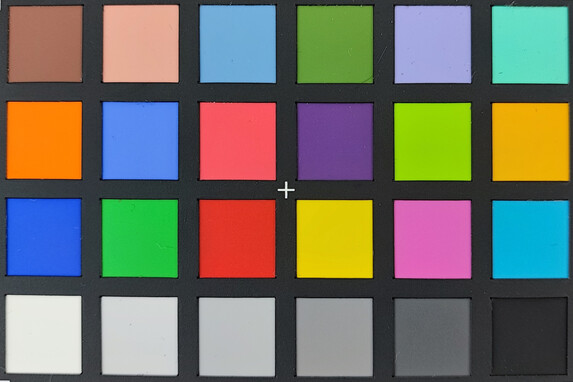

Accessories and warranty - Xiaomi 11T Pro with charger
We praise Xiaomi for what is included in the box. In addition to a USB charging cable and a protective cover, the package also contains a modular charger compatible with Xiaomi's HyperCharge technology that has a rated power of 120 watts. Our review sample also came with a protecting film out of the box.
The Xiaomi smartphone comes with a one-year limited warranty. The Chinese manufacturer doesn't offer optional insurance or accident protection.
Input devices and handling - Xiaomi phone with 480 Hz
The capacitive touchscreen responds reliably to touch input, and the gliding properties of the Gorilla Glass panel are excellent. Using the display is also benefited from the high refresh rate of 120 Hz, which makes image transitions and scrolling through menus or the browser buttery smooth. The capacitive touchscreen also offers a very low touch latency. The 11T Pro detects possible user input up to 480 times per second in certain applications (such as games).
Using facial recognition, the Xiaomi phone can be unlocked by facial data, but this is done with a 2D procedure and is therefore not very secure. A fingerprint scanner has been integrated into the power button to offer a secure biometric unlock option that impresses with its very high recognition rate. We also find its location to have been chosen well.
Display - 11T Pro with OLED panel
Xiaomi's 11T Pro model features a a 6.67-inch HDR10+ certified AMOLED panel with a resolution of 2400x1080 pixels and a refresh rate of 120 Hz. It should be noted that the display is set to 60 Hz by default and must be manually changed to a refresh rate of 120 Hz in the display settings. The Pro model doesn't offer an adaptive refresh rate like the Xiaomi Mi 11 does.
The Chinese manufacturer states a peak brightness of 800 nits for the 11T Pro and 1,000 nits for HDR content, and we were also able to confirm this with our measurements. We measure a brightness of 980 cd/m² in the APL50 test – but the APL10 test definitely still leaves room for improvement.
The high-end phone uses pulse width modulation (PWM) for brightness control at a fairly high frequency of 253 to 490 Hz as soon as the brightness is dimmed to below 59%. Above this, we measure a frequency of 120 Hz, but the fluctuations in the amplitude curve are much lower here. A DC-dimming mode can also be found in the settings menu. However, it can only be implemented when using a 60 Hz refresh rate.
| |||||||||||||||||||||||||
Brightness Distribution: 96 %
Center on Battery: 778 cd/m²
Contrast: ∞:1 (Black: 0 cd/m²)
ΔE ColorChecker Calman: 1.6 | ∀{0.5-29.43 Ø4.78}
ΔE Greyscale Calman: 2.9 | ∀{0.09-98 Ø5}
97.5% sRGB (Calman 2D)
Gamma: 2.2
CCT: 6537 K
| Xiaomi 11T Pro AMOLED, 2400x1080, 6.7" | Xiaomi 11T AMOLED, 2400x1080, 6.7" | OnePlus 9 AMOLED, 2400x1080, 6.6" | Motorola Edge 20 Pro OLED, 2400x1080, 6.7" | Samsung Galaxy S21 Dynamic AMOLED 2X, 2400x1080, 6.2" | Xiaomi Mi 11 LED DotDisplay, 3200x1440, 6.8" | |
|---|---|---|---|---|---|---|
| Screen | 5% | 32% | 9% | 3% | 19% | |
| Brightness middle (cd/m²) | 778 | 781 0% | 731 -6% | 666 -14% | 790 2% | 840 8% |
| Brightness (cd/m²) | 782 | 782 0% | 739 -5% | 644 -18% | 793 1% | 845 8% |
| Brightness Distribution (%) | 96 | 94 -2% | 96 0% | 93 -3% | 97 1% | 98 2% |
| Black Level * (cd/m²) | ||||||
| Colorchecker dE 2000 * | 1.6 | 2 -25% | 0.59 63% | 1.4 12% | 2.2 -38% | 1.2 25% |
| Colorchecker dE 2000 max. * | 4.5 | 2.9 36% | 1.3 71% | 2.65 41% | 4.2 7% | 2.7 40% |
| Greyscale dE 2000 * | 2.9 | 2.3 21% | 0.9 69% | 1.9 34% | 1.6 45% | 2 31% |
| Gamma | 2.2 100% | 2.28 96% | 2.243 98% | 2.209 100% | 2.13 103% | 2.26 97% |
| CCT | 6537 99% | 6852 95% | 6573 99% | 6646 98% | 6497 100% | 6492 100% |
* ... smaller is better
Screen Flickering / PWM (Pulse-Width Modulation)
| Screen flickering / PWM detected | 490.2 Hz | ≤ 59 % brightness setting | |
The display backlight flickers at 490.2 Hz (worst case, e.g., utilizing PWM) Flickering detected at a brightness setting of 59 % and below. There should be no flickering or PWM above this brightness setting. The frequency of 490.2 Hz is relatively high, so most users sensitive to PWM should not notice any flickering. However, there are reports that some users are still sensitive to PWM at 500 Hz and above, so be aware. In comparison: 53 % of all tested devices do not use PWM to dim the display. If PWM was detected, an average of 8111 (minimum: 5 - maximum: 343500) Hz was measured. | |||
Like in the 11T model, Xiaomi uses an OLED display for the Pro model where individual pixels can be completely turned off, which results in "absolute" blacks. Therefore, the contrast (theoretically) tends towards infinity. In our tests with the CalMAN software and a spectrophotometer, the Xiaomi phone's display proves to be well calibrated, and it delivers low color deviations (in the Standard profile).
In addition, the high-end phone offers a lot of settings that affect different profiles, as well as individual display parameters, such as saturation, or gamma. The panel's color temperature can also be automatically adjusted to the ambient light with the True Display function.
Display Response Times
| ↔ Response Time Black to White | ||
|---|---|---|
| 2.4 ms ... rise ↗ and fall ↘ combined | ↗ 1.2 ms rise | |
| ↘ 1.2 ms fall | ||
| The screen shows very fast response rates in our tests and should be very well suited for fast-paced gaming. In comparison, all tested devices range from 0.1 (minimum) to 240 (maximum) ms. » 11 % of all devices are better. This means that the measured response time is better than the average of all tested devices (20.2 ms). | ||
| ↔ Response Time 50% Grey to 80% Grey | ||
| 2.4 ms ... rise ↗ and fall ↘ combined | ↗ 1.2 ms rise | |
| ↘ 1.2 ms fall | ||
| The screen shows very fast response rates in our tests and should be very well suited for fast-paced gaming. In comparison, all tested devices range from 0.165 (minimum) to 636 (maximum) ms. » 10 % of all devices are better. This means that the measured response time is better than the average of all tested devices (31.6 ms). | ||
The viewing-angle stability is very good due to the OLED technology, and a slight brightness loss is only noticeable at very flat viewing angles.
The premium smartphone proves to be optimally equipped for everyday outdoor use. Content should remain easily legible even in direct sunlight and with the accompanying reflections on the glass surface due to the high brightness and strong contrast. It should be noted that the maximum luminance without the brightness sensor enabled is only 485 cd/m².
Performance - Xiaomi 11T Pro with the Snapdragon 888
In contrast to the Xiaomi 11T, the 11T Pro is equipped with a Qualcomm SoC instead of the MediaTek Dimensity 1200. The Snapdragon 888 integrates a fast "Prime Core" based on the ARM Cortex-X1 architecture with speeds of up to 2.84 GHz, three fast Cortex A78-based performance cores (2.42 GHz), as well as four ARM Cortex-A55 cores with a maximum clock rate of 1.8 GHz. This is accompanied by an Adreno 660 as the graphics unit.
In our benchmark package, the Snapdragon 888 also reveals its impressive performance in the 11T Pro. However, the Xiaomi phone performs relatively poorly in some tests, especially in browsing applications. We also observe a considerable decrease in graphics performance in the GFXBench benchmark, where the onscreen values are reduced to 60 fps as a result of thermal issues (see the "Emissions" section). This can be problematic during long HFR gaming sessions, since the 11T Pro can't use the full 120 Hz. However, the onscreen rates are generally weak at times.
In everyday use, the Xiaomi phone runs very smoothly and almost without any lags. The system performance is first-rate, and application loading times are very short. This is also due to the fast read and write rates of the UFS storage drive. Nevertheless, these are relatively low for the 3.1 standard, as the Snapdragon 888 should (theoretically) reach the full bandwidth of the UFS storage.
| AnTuTu v8 - Total Score (sort by value) | |
| Xiaomi 11T Pro | |
| Xiaomi 11T | |
| OnePlus 9 | |
| Samsung Galaxy S21 | |
| Xiaomi Mi 11 | |
| Average Qualcomm Snapdragon 888 5G (569595 - 740847, n=12) | |
| AImark - Score v2.x (sort by value) | |
| Xiaomi 11T Pro | |
| Xiaomi 11T | |
| OnePlus 9 | |
| Motorola Edge 20 Pro | |
| Samsung Galaxy S21 | |
| Xiaomi Mi 11 | |
| Average Qualcomm Snapdragon 888 5G (171404 - 264766, n=15) | |
| Jetstream 2 - 2.0 Total Score | |
| Average of class Smartphone (23.8 - 387, n=153, last 2 years) | |
| Xiaomi 11T Pro (MS Edge) | |
| Average Qualcomm Snapdragon 888 5G (61.3 - 125.1, n=13) | |
| Motorola Edge 20 Pro (Chrome 94) | |
| Xiaomi Mi 11 (Chrome 88) | |
| Samsung Galaxy S21 (Chrome 88.0.4324.152) | |
| OnePlus 9 (MS Edge) | |
| Xiaomi 11T (Chrome 94.0.4606.85) | |
| JetStream 1.1 - Total Score | |
| Xiaomi 11T Pro (Chrome96) | |
| Motorola Edge 20 Pro (Chrome 94) | |
| Average Qualcomm Snapdragon 888 5G (77 - 223, n=19) | |
| Xiaomi Mi 11 (Chrome 88) | |
| OnePlus 9 (MS Edge) | |
| Xiaomi 11T (Chrome 94.0.4606.85) | |
| Samsung Galaxy S21 (Chrome 88.0.4324.152) | |
| Speedometer 2.0 - Result 2.0 | |
| Average of class Smartphone (15.2 - 643, n=126, last 2 years) | |
| Xiaomi 11T Pro (MS Edge) | |
| Average Qualcomm Snapdragon 888 5G (46.9 - 121, n=12) | |
| Samsung Galaxy S21 (Chrome 88.0.4324.152) | |
| Motorola Edge 20 Pro (Chrome 94) | |
| Xiaomi Mi 11 (Chrome 88) | |
| OnePlus 9 (MS Edge) | |
| Xiaomi 11T (Chrome 94.0.4606.85) | |
| WebXPRT 3 - Overall | |
| Average of class Smartphone (38 - 380, n=34, last 2 years) | |
| Xiaomi 11T Pro (MS Edge) | |
| Average Qualcomm Snapdragon 888 5G (103 - 182, n=18) | |
| Motorola Edge 20 Pro (Chrome 94) | |
| Xiaomi Mi 11 (Chrome 88) | |
| OnePlus 9 (MS Edge) | |
| Samsung Galaxy S21 (Chrome 88.0.4324.152) | |
| Xiaomi 11T (Chrome 94.0.4606.85) | |
| Octane V2 - Total Score | |
| Average of class Smartphone (2228 - 121337, n=201, last 2 years) | |
| Motorola Edge 20 Pro (Chrome 94) | |
| Average Qualcomm Snapdragon 888 5G (23491 - 47543, n=20) | |
| Xiaomi 11T Pro (MS Edge) | |
| Xiaomi 11T (Chrome 94.0.4606.85) | |
| Xiaomi Mi 11 (Chrome 88) | |
| Samsung Galaxy S21 (Chrome 88.0.4324.152) | |
| OnePlus 9 (Chrome89) | |
| Mozilla Kraken 1.1 - Total | |
| Samsung Galaxy S21 (Chrome 88.0.4324.152) | |
| Xiaomi Mi 11 (Chrome 88) | |
| OnePlus 9 (Chrome89) | |
| Xiaomi 11T (Chrome 94.0.4606.85) | |
| Average Qualcomm Snapdragon 888 5G (891 - 1841, n=20) | |
| Xiaomi 11T Pro (MS Edge) | |
| Motorola Edge 20 Pro (Chrome 94) | |
| Average of class Smartphone (257 - 28190, n=156, last 2 years) | |
* ... smaller is better
| Xiaomi 11T Pro | Xiaomi 11T | OnePlus 9 | Motorola Edge 20 Pro | Samsung Galaxy S21 | Xiaomi Mi 11 | Average 256 GB UFS 3.1 Flash | Average of class Smartphone | |
|---|---|---|---|---|---|---|---|---|
| AndroBench 3-5 | -14% | 1% | -5% | 25% | 12% | 32% | 61% | |
| Sequential Read 256KB (MB/s) | 1787 | 1790 0% | 1872 5% | 1699 -5% | 1648 -8% | 1615 -10% | 1757 ? -2% | 2216 ? 24% |
| Sequential Write 256KB (MB/s) | 787 | 942 20% | 739 -6% | 723 -8% | 1095 39% | 754 -4% | 1204 ? 53% | 1837 ? 133% |
| Random Read 4KB (MB/s) | 231.6 | 139.3 -40% | 225.4 -3% | 245.7 6% | 309.7 34% | 278.5 20% | 287 ? 24% | 294 ? 27% |
| Random Write 4KB (MB/s) | 207.2 | 133.3 -36% | 221.4 7% | 179.6 -13% | 282.6 36% | 289.3 40% | 318 ? 53% | 334 ? 61% |
Games - Gaming is possible with the Xiaomi smartphone
We take a closer look at the gaming performance with our partner GameBench using game titles from the Play Store. The Chinese manufacturer provides a "Game Turbo" mode for this purpose, which offers several settings, while it also logs the system's performance and even the current FPS rate.
The shooter PUBG mobile, where the Ultra HD setting can be selected, is rendered smoothly at 40 fps using the highest level of details. Nonetheless, the OLED panel's full 120 Hz are neither available using high nor low graphics. The high-end phone manages a maximum of 60 fps here. Our measurements don't reveal any visible drops in frame rates.
Surprisingly, the 11T Pro "only" achieves 76 fps on average in Armajet as well, even though the arena shooter is supposed to support the OLED panel's full 120 Hz.
Emissions - The Xiaomi 11T Pro doesn't always remain cool
Temperature
In contrast to the Xiaomi Mi 11, where benchmarks are aborted quite quickly due to an overheating protection, the tests (theoretically) run without issues on the latest high-end phone from the Xiaomi company. However, we were also able to push the system to the limit here by stressing the 11T Pro continuously with the GFXBench benchmarks and the 3DMark stress tests for about 60 minutes. Surprisingly, the case's surface temperatures remain absolutely within limits. Even under load and during a longer gaming session, the 11T Pro gets noticeably warm, but with a maximum of 35 °C (~95 °F), it's comparatively cool for a Snapdragon 888 device.
Unfortunately, the premium phone from Xiaomi ends the GFXBench battery test with problems when running the challenging Manhattan Test (OpenGL ES 3.1), so the test couldn't be evaluated. However, the Wild Life Stress Test runs smoothly as long as it's not executed all the time (more than three repetitions of the entire test).
With 95%, the 11T Pro is similarly consistent as its 11T sibling, but overall much more powerful. The Snapdragon 888 also undergoes slight throttling in the Wild Life Extreme Stress Test with a stability of 91%.
(+) The maximum temperature on the upper side is 34.6 °C / 94 F, compared to the average of 35.2 °C / 95 F, ranging from 21.9 to 247 °C for the class Smartphone.
(+) The bottom heats up to a maximum of 34.2 °C / 94 F, compared to the average of 34 °C / 93 F
(+) In idle usage, the average temperature for the upper side is 27.1 °C / 81 F, compared to the device average of 32.9 °C / 91 F.
3DMark Wild Life Stress Test
| 3DMark | |
| Wild Life Stress Test Stability | |
| Motorola Edge 20 Pro | |
| Xiaomi 11T | |
| Xiaomi 11T Pro | |
| Xiaomi Mi 11 | |
| Samsung Galaxy S21 | |
| OnePlus 9 | |
| Wild Life Extreme Stress Test | |
| Motorola Edge 20 Pro | |
| Xiaomi 11T | |
| Xiaomi 11T Pro | |
Speakers
The dual speakers in the 11T Pro deliver a high maximum volume of over 88 dB and a very decent sound. As opposed to the Xiaomi 11T, the Pro model's audio system is optimized by Harman Kardon and supports Dolby Vision.
Although the two speakers in the Pro model lack a bit of depth, we like the sound experience due to the linear highs and fairly present mids, in spite of the fact that the low sound ranges are reproduced a bit too thinly.
Headphones or external speakers can be connected to the USB-C port using a cable. Users who prefer to use Bluetooth for wireless output will have access to the full audio codec palette. SBC, AAC, aptX, aptXHD, and aptX Adaptive, as well as LDAC and LHDC are supported.
Xiaomi 11T Pro audio analysis
(+) | speakers can play relatively loud (88.4 dB)
Bass 100 - 315 Hz
(-) | nearly no bass - on average 26.3% lower than median
(±) | linearity of bass is average (8.1% delta to prev. frequency)
Mids 400 - 2000 Hz
(+) | balanced mids - only 4.8% away from median
(+) | mids are linear (4.9% delta to prev. frequency)
Highs 2 - 16 kHz
(+) | balanced highs - only 2.9% away from median
(+) | highs are linear (1.9% delta to prev. frequency)
Overall 100 - 16.000 Hz
(±) | linearity of overall sound is average (16.7% difference to median)
Compared to same class
» 8% of all tested devices in this class were better, 6% similar, 86% worse
» The best had a delta of 11%, average was 35%, worst was 134%
Compared to all devices tested
» 28% of all tested devices were better, 7% similar, 65% worse
» The best had a delta of 4%, average was 24%, worst was 134%
OnePlus 9 audio analysis
(+) | speakers can play relatively loud (83 dB)
Bass 100 - 315 Hz
(-) | nearly no bass - on average 68.3% lower than median
(+) | bass is linear (0% delta to prev. frequency)
Mids 400 - 2000 Hz
(-) | nearly no mids - on average 68.3% lower than median
(+) | mids are linear (0% delta to prev. frequency)
Highs 2 - 16 kHz
(-) | nearly no highs - on average 68.3% lower than median
(+) | highs are linear (0% delta to prev. frequency)
Overall 100 - 16.000 Hz
(-) | overall sound is not linear (117.1% difference to median)
Compared to same class
» 87% of all tested devices in this class were better, 6% similar, 6% worse
» The best had a delta of 11%, average was 35%, worst was 134%
Compared to all devices tested
» 96% of all tested devices were better, 2% similar, 2% worse
» The best had a delta of 4%, average was 24%, worst was 134%
Battery life - The Xiaomi phone charges super fast
Energy consumption
For a Snapdragon 888 smartphone, the 11T Pro reveals a consistently modest power consumption. However, the GFXBench measurements using a display brightness of (150 cd/m²) illustrate the rather high power consumption of the Qualcomm SoC compared with the Motorola Edge 20 Pro running the Snapdragon 870.
The battery has a capacity of 5,000 mAh and supports very fast wired charging at up to 120 watts. The MTW (Multiple Tab Winding) battery technology is supposed to reduce the internal resistance of the two-cell battery in the 11T Pro and enable better thermal control with a higher power consumption. According to Xiaomi, about 80% of the original capacity should still be preserved after 800 charge cycles.
With the 120-watt charger, the Pro model of the 11T series is fully recharged within 21 minutes. That said, wireless charging is not supported.
| Off / Standby | |
| Idle | |
| Load |
|
Key:
min: | |
| Xiaomi 11T Pro 5000 mAh | Xiaomi 11T 5000 mAh | OnePlus 9 4500 mAh | Motorola Edge 20 Pro 4500 mAh | Samsung Galaxy S21 4000 mAh | Xiaomi Mi 11 4600 mAh | Average Qualcomm Snapdragon 888 5G | Average of class Smartphone | |
|---|---|---|---|---|---|---|---|---|
| Power Consumption | 6% | -15% | 29% | -13% | -31% | -6% | -8% | |
| Idle Minimum * (Watt) | 0.81 | 0.78 4% | 0.9 -11% | 0.7 14% | 1.1 -36% | 1.57 -94% | 1.066 ? -32% | 0.848 ? -5% |
| Idle Average * (Watt) | 1.92 | 1.86 3% | 1.7 11% | 0.9 53% | 1.61 16% | 1.92 -0% | 1.58 ? 18% | 1.434 ? 25% |
| Idle Maximum * (Watt) | 1.96 | 1.88 4% | 2.7 -38% | 1.2 39% | 1.78 9% | 1.94 1% | 1.733 ? 12% | 1.618 ? 17% |
| Load Average * (Watt) | 4.29 | 3.98 7% | 5.4 -26% | 4.6 -7% | 6.47 -51% | 6.32 -47% | 5.46 ? -27% | 7.01 ? -63% |
| Load Maximum * (Watt) | 9.93 | 8.78 12% | 11.1 -12% | 5.5 45% | 10.12 -2% | 11.65 -17% | 9.79 ? 1% | 11.3 ? -14% |
* ... smaller is better
Energy consumption: Geekbench (150 cd/m²)
Energy consumption: GFXBench (150 cd/m²)
Battery life
The battery runtimes of the high-end phone were determined with the 120 Hz refresh rate enabled. The 11T Pro achieves really good rates in our real-world Wi-Fi test as well as in our video playback test with the WLAN module disabled, lasting almost 14 hours and 23 hours in each test, respectively. Even under full load, the 11T Pro has an outstanding endurance for a 120 Hz smartphone.
| Xiaomi 11T Pro 5000 mAh | Xiaomi 11T 5000 mAh | OnePlus 9 4500 mAh | Motorola Edge 20 Pro 4500 mAh | Samsung Galaxy S21 4000 mAh | Xiaomi Mi 11 4600 mAh | |
|---|---|---|---|---|---|---|
| Battery runtime | 4% | -22% | -14% | -22% | -34% | |
| Reader / Idle (h) | 29.4 | 37.4 27% | 27.1 -8% | 28.2 -4% | 28.6 -3% | 19.1 -35% |
| H.264 (h) | 22.9 | 24.2 6% | 15.5 -32% | 21.5 -6% | 15.7 -31% | 16.2 -29% |
| WiFi v1.3 (h) | 13.9 | 13.6 -2% | 14.2 2% | 12.9 -7% | 9.1 -35% | 8.8 -37% |
| Load (h) | 5.4 | 4.5 -17% | 2.8 -48% | 3.3 -39% | 4.5 -17% | 3.6 -33% |
Pros
Cons
Verdict on the Xiaomi 11T Pro
Xiaomi still offers a lot of smartphone for the money with the 11T Pro, and the high-speed fast-charging feature is particularly hard to find in this price range. However, in relation to the Xiaomi Mi 11, which has now dropped considerably in price, this HyperCharge technology has to play an important role for potential buyers, because the the Pro model of the 11T series lacks certain premium features. The 11T Pro lacks a waterproof case, wireless charging, a 1440p resolution, or an optically stabilized main camera. In exchange, the T model scores points with really good battery life that should get even the heaviest user through the day.
Due to the rather decreasing number of innovations in the smartphone segment and the high levels of performance, long-term updates are an important strategy that Xiaomi has taken.
Unfortunately, the Chinese manufacturer has (once again) failed to equip one of its high-end phones with a more modern USB standard or to provide users with a 4K option for the front-facing camera.
If you can live with the MediaTek Dimensity 1200 and the "slower" charging times, the Xiaomi 11T is a very similar and more affordable alternative to the 11T Pro.
Price and availability
At the time of writing, you can find the Xiaomi 11T Pro on Newegg, with prices starting at around $775 for the 128 GB version. If you're in the UK, you can purchase the device directly from the manufacturer. The base version (8/128 GB) costs £599.00 (~$798).
Xiaomi 11T Pro
- 08/30/2022 v7 (old)
Marcus Herbrich




